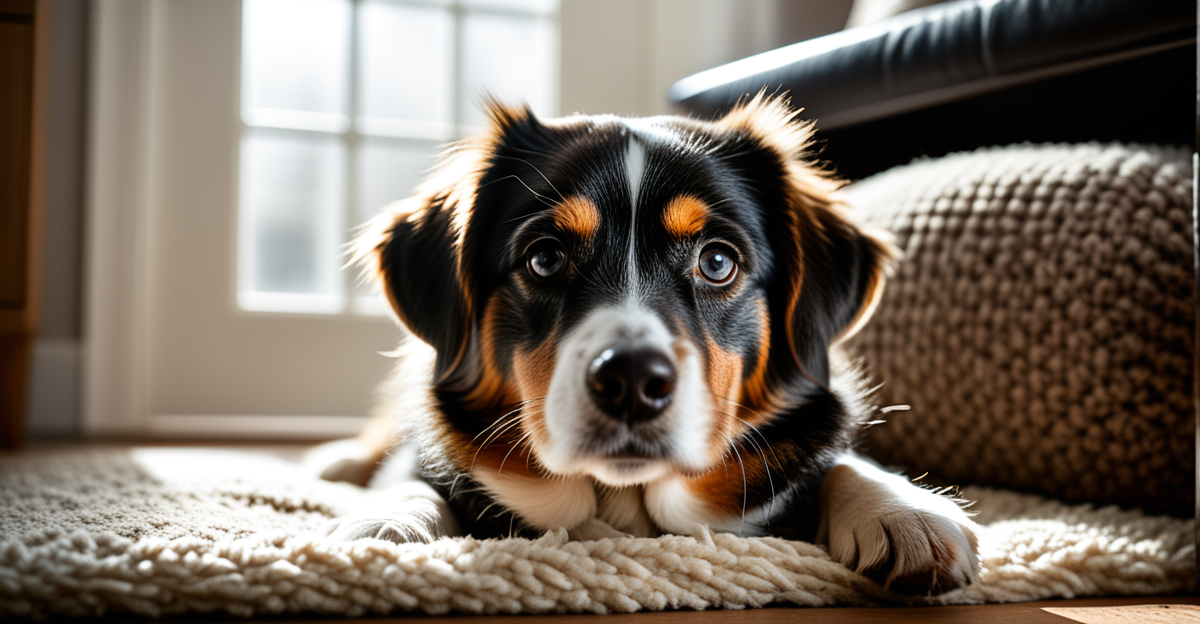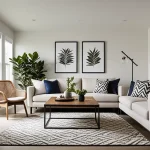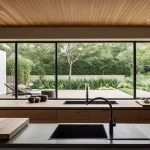Essential Steps for Creating a Pet-Friendly Environment in the UK
Creating a pet-friendly home UK starts with assessing your home’s layout to ensure it supports a comfortable living space for pets. This means identifying areas where your pet can move safely without risk, and evaluating if there’s enough room for pet-specific zones such as feeding, resting, and play areas. Consider traffic flow and whether certain spaces pose hazards.
Next, practical steps include designating clear, consistent zones for your pet’s essentials. This might involve setting up a cozy corner with bedding, bowls placed in quiet yet accessible spots, and storage for toys or grooming supplies. Routine and consistency are key: pets thrive when their environment and daily rhythms feel predictable and secure.
In the same genre : How Can Pets in the UK Improve Your Mental Well-being?
An effective pet-friendly home UK balances functionality with comfort, offering spaces where pets feel safe and owners can maintain easy care. Starting with a thoughtful assessment fosters a nurturing atmosphere, encouraging both pet wellbeing and harmonious living. Consistency in these environments supports behavioral stability, reducing stress and helping pets settle into your home seamlessly.
Key Room Setup and Safety Considerations
Ensuring a secure and appropriate space for your pet
Additional reading : How do I prepare my home for a new UK pet?
When planning a pet room setup UK, safety must be paramount. Identifying hazardous areas and conducting thorough UK pet-proofing helps prevent accidents. This includes securing chemicals, medicines, and small objects pets might swallow. Electrical safety is especially important; ensure cords are hidden or secured to avoid chewing, a common risk in UK homes with curious pets.
Choosing the appropriate room or space depends on your pet’s size and behavior. For example, a quiet spare room can become an ideal pet-friendly home UK zone, offering a retreat from busy household activity. Good ventilation and natural light contribute to a comfortable living space for pets, enhancing their wellbeing.
UK-specific safety also involves preventing exposure to dampness and cold drafts, frequent concerns in British homes. Use draft excluders and humidity control to maintain a safe environment. High floors or balconies require barriers to protect especially cats and small pets from falls.
In summary, a considered pet room setup UK balances space, safety, and comfort, establishing a secure foundation for your pet’s needs while adhering to UK pet-proofing standards. This structured approach supports both owner peace of mind and a healthy pet living space.
Bedding, Temperature, and Comfort Solutions
Creating a comfortable pet environment in the UK hinges on choosing appropriate pet bedding UK options and controlling indoor climate effectively. Selecting bedding that suits your pet’s size, habits, and any health needs ensures a restful space. For example, memory foam beds offer orthopedic support, while washable cushioned mats ease cleaning—both widely available across the UK.
Temperature control is pivotal for pet comfort year-round. UK homes often face cold winters and damp conditions, so maintaining a warm but well-ventilated room avoids respiratory issues. A thermostat to monitor temperatures, along with draft excluders, prevents chills. In summer, light bedding and access to cooler areas help pets avoid overheating.
Addressing dampness and drafts is crucial in older British properties. Damp environments can cause discomfort and health risks such as skin irritations. Using moisture absorbers or dehumidifiers combats this effectively. Placing beds away from external walls and windows reduces cold exposure, creating a secure, cozy retreat.
By focusing on suitable pet bedding UK and managing temperature, you ensure a comfortable living space for pets that supports longevity and wellbeing, perfectly tailored to typical UK climate challenges. This attention to environment details enhances your pet-friendly home UK strategy substantially.
Tailoring Advice for Different Types of Pets
Tailoring your pet-friendly home UK to specific needs ensures a truly comfortable living space for pets. Dogs UK and cats UK have distinct requirements. Dogs often need durable flooring and outdoor access for exercise, while cats UK benefit from vertical spaces and hiding spots for enrichment. Small pets like rabbits or guinea pigs require secure enclosures with soft bedding and temperature regulation.
Adapting your home by pet type enhances wellbeing. For example, dogs UK in flats may need more frequent outdoor walks and indoor play areas, while those in houses with gardens have natural options for enrichment. Cats UK enjoy climbing trees or shelves, so incorporating these into your setup supports natural behaviors.
Pet-specific comfort involves choosing suitable bedding and toys. Small pets need chew-resistant materials, while dogs UK may benefit from orthopedic beds. Understanding these nuances helps achieve a comfortable living space for pets tailored to their species and lifestyle.
By recognizing differences between dogs UK, cats UK, and small pets, you can create effective enrichment and comfort. This focus prevents stress and supports behavioral health, key elements of a harmonious, pet-friendly home UK.
Essential Steps for Creating a Pet-Friendly Environment in the UK
To establish a truly pet-friendly home UK, begin by carefully assessing your home’s layout for a comfortable living space for pets. Evaluate traffic flow to identify safe pathways, ensuring pets can move without obstruction or risk. Consider areas that can be dedicated to your pet’s specific needs, such as feeding stations, rest zones, and play corners, which help structure their environment meaningfully.
Setting up these pet-specific areas is practical and straightforward. Use non-slip mats under bowls to prevent spills and designate a quiet space with soft bedding where your pet can retreat. Storage solutions for toys and grooming tools keep the space organized and accessible while reducing clutter. Consistency in placing these zones across your home eases your pet’s adaptation.
Routine plays a crucial role. Pets benefit from predictability; maintaining consistent feeding times and play sessions supports behavioral stability and reduces anxiety. A well-thought-out pet-friendly home UK offers structure while providing comfort. By prioritizing layout and routine, you create a nurturing environment where pets feel secure and cared for, making daily life smoother for both owner and pet alike.
Essential Steps for Creating a Pet-Friendly Environment in the UK
Creating a pet-friendly home UK starts with a detailed assessment of your home’s layout to ensure a comfortable living space for pets. First, evaluate pathways and identify potential hazards that could restrict your pet’s movement. Pets need clear, unobstructed routes to access their feeding, resting, and play areas safely. This step reduces accidents and stress, fostering an environment where pets can explore confidently.
Practical setup involves designating specific zones for essentials. Establish quiet corners with soft bedding and place feeding stations away from high-traffic areas to encourage relaxed mealtimes. Using non-slip mats beneath bowls prevents spills, enhancing cleanliness and comfort. Organizing storage for toys and grooming supplies in these areas reduces clutter and makes care routines more efficient.
Routine and consistency contribute significantly to pet wellbeing. Regular feeding times and play sessions create predictability, which supports behavioral stability and emotional security. This predictability comforts pets, making your pet-friendly home UK a reliable sanctuary. Prioritizing these practical steps ensures your pet’s space is both functional and nurturing, tailored to their needs and your lifestyle.
Essential Steps for Creating a Pet-Friendly Environment in the UK
Creating a safe and welcoming home for your pet
Assessing your home’s layout is crucial for establishing a pet-friendly home UK that offers a comfortable living space for pets. Start by mapping out clear, obstacle-free routes to key zones—feeding, resting, and play areas—to ensure your pet navigates safely throughout the house. Clutter or narrow pathways can stress pets or cause accidents, so rearranging furniture where necessary enhances mobility.
Practical steps for setting up pet-specific areas include designating quiet corners with comfortable bedding, situated away from busy household traffic. Use easy-to-clean mats under food and water bowls to prevent mess and slips. Storage solutions that keep toys and grooming supplies tidy further define these dedicated zones, making care routines simpler and more efficient.
Routine and consistency are often overlooked but vital for pet wellbeing. Feeding at regular times and scheduling play sessions help pets feel secure and reduce anxiety. Maintaining consistent locations for essentials like beds and bowls supports their sense of familiarity, critical in a pet-friendly home UK aiming for a truly comfortable living space for pets.








